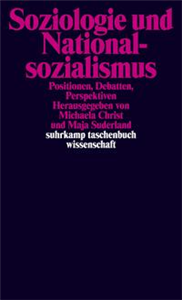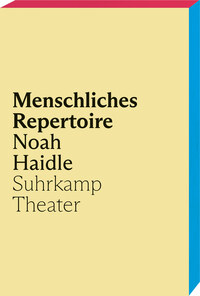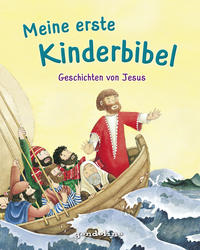Your Search Results
-
Christine Heimannsberg
Gelobtes Land, die dystopische Climate Fiction Trilogie: Mit CO2 verbindet man den Klimawandel, schmelzende Gletscher und Überflutungen. Mittlerweile ist der Klimawandel auch in der Literatur angekommen. „Climate Fiction“ oder „Cli-fi“ lautet das Stichwort, das zuletzt verstärkt in den Feuilletons auftauchte. Die deutsche Autorin Christine Heimannsberg präsentiert mit ihrer Debüt-Trilogie „Gelobtes Land“ eine ungewöhnliche, spannende Dystopie, die ökologische wie humanistische Themen geschickt im neuen Genre zusammenführt.
View Rights Portal
-
Promoted Content
-
Promoted ContentSeptember 2014
Soziologie und Nationalsozialismus
Positionen, Debatten, Perspektiven
by Michaela Christ, Maja Suderland
Das Verhältnis der deutschen Soziologie zum Nationalsozialismus ist merkwürdig: Trotz der gesellschaftlichen Bedeutung des Themas gibt es nur vereinzelte soziologische Analysen. Warum ist das so? In welchen Bereichen des Fachs fand überhaupt eine Auseinandersetzung mit dem »Dritten Reich« statt? Was könnte die Soziologie zur Erforschung des Nationalsozialismus und des Holocaust beitragen? Und was wäre der Gewinn für das Fach selbst, wenn es sich mit diesen Themen beschäftigte? Der Band versucht erstmalig, Antworten auf diese Fragen zu finden. Mit Beiträgen von Michael Becker, Henning Borggräfe, Michaela Christ, Helmut Dahmer, Christian Gudehus, Peter Imbusch, Kobi Kabalek, Carsten Klingemann, Beate Krais, Nina Leonhard, Elissa Mailänder, Ludger Pries, Karl-Siegbert Rehberg, Christoph Reinprecht, Gerhard Schäfer, Sonja Schnitzler, Hans-Georg Soeffner, Erhard Stölting und Maja Suderland.
-
 Trusted Partner
Trusted Partner
-
 Trusted Partner
Humanities & Social SciencesMarch 2017
Trusted Partner
Humanities & Social SciencesMarch 2017The Arctic in the British imagination 1818–1914
by Andrew Thompson, John M. MacKenzie, Rob David
The Arctic region has been the subject of much popular writing. This book considers nineteenth-century representations of the Arctic, and draws upon an extensive range of evidence that will allow the 'widest connections' to emerge from a 'cross-disciplinary analysis' using different methodologies and subject matter. It positions the Arctic alongside more thoroughly investigated theatres of Victorian enterprise. In the nineteenth century, most images were in the form of paintings, travel narratives, lectures given by the explorers themselves and photographs. The book explores key themes in Arctic images which impacted on subsequent representations through text, painting and photography. For much of the nineteenth century, national and regional geographical societies promoted exploration, and rewarded heroic endeavor. The book discusses images of the Arctic which originated in the activities of the geographical societies. The Times provided very low-key reporting of Arctic expeditions, as evidenced by its coverage of the missions of Sir John Franklin and James Clark Ross. However, the illustrated weekly became one of the main sources of popular representations of the Arctic. The book looks at the exhibitions of Arctic peoples, Arctic exploration and Arctic fauna in Britain. Late nineteenth-century exhibitions which featured the Arctic were essentially nostalgic in tone. The Golliwogg's Polar Adventures, published in 1900, drew on adult representations of the Arctic and will have confirmed and reinforced children's perceptions of the region. Text books, board games and novels helped to keep the subject alive among the young.
-
 Trusted Partner
April 2026
Trusted Partner
April 2026Menschliches Repertoire
by Noah Haidle, Barbara Christ
Noah Haidle erzählt in Menschliches Repertoire die Geschichte, und das Ende, unserer Spezies. Mit viel Zuneigung und scharfem Humor blickt er auf Vergangenes und Gegenwärtiges – und entwirft dabei mit klugem Blick und großer Leichtigkeit ein Welttheater der Menschheit. So tragisch, dramatisch, aber eben auch liebevoll und lustig, dass Noah Haidle vor allem davon erzählt, was uns am Leben hält: Hoffen und Lieben. Die Welt, sie ist erschüttert und sehr wahrscheinlich nicht mehr zu retten. Doch Haidle führt uns weg von diesem Ort und ins Zwischenreich von Leben und Tod, zur Hinterbühne. Dort empfangen Hollis und Bellamy die gerade Gestorbenen auf ihrem Transit in das Land der Toten und leiten sie weiter zu süßen Teilchen und Gurkensandwiches. Doch eine Gruppe möchte sich keinesfalls von diesem Zwischenraum lösen und ignoriert die Anweisungen: Samantha, eine Lehrerin, will unbedingt die Direktorin sprechen, Lloyd, ein liebender Vater, muss weiter seinen kleinen Sohn aus der Ferne beobachten und Roxanne hofft darauf, dass ihr Liebster endlich seinen Teil des Doppelsuizids erfüllt und bei ihr eintrifft. Doch auch im Zwischenreich bröckelt es, die Wände beben, brechen langsam in sich zusammen und dann tönt es schließlich von der Direktorin: Die Show, sie wird abgesetzt. Die Lage der Menschen und der Welt ist aussichtslos. Die Schicksalsgemeinschaft beschließt also, eine letzte große Party zu feiern und lässt 400.000 Jahre Menschheitsgeschichte Revue passieren. Die Offenbarung: Die größten Erfolge der Menschheit liegen nah bei ihren schlimmsten Gräueltaten.
-
 Trusted Partner
November 2014
Trusted Partner
November 2014Jesus von Nazaret
Der sanfte Rebell
by Alois Prinz
Für die einen war er ein politischer Rebell, für die anderen der Messias und Gottes Sohn: Jesus von Nazaret. Seine Lehre und sein Leben sind nicht voneinander zu trennen. Alois Prinz zeichnet anschaulich das dramatische Leben dieses Mannes nach, der in einer politisch brisanten Zeit die Botschaft von Mitmenschlichkeit und göttlicher Liebe verbreitete und diese auch selbst lebte. Wir erfahren, unter welchen Lebensumständen Jesus aufwuchs, was ihn prägte, wie er handelte und was ihm wichtig war. Ein Leben, das seit über 2000 Jahren Orientierung ist für alle auf der Suche nach innerer Freiheit und Mitmenschlichkeit und das auch in der heutigen Zeit Wegweiser sein kann.
-
 Trusted Partner
Trusted Partner
-
 Trusted Partner
Trusted Partner
-
 Trusted Partner
January 2021
Trusted Partner
January 2021Meine erste Kinderbibel - Geschichten von Jesus
Geschenkbuch für Kinder, im Kindergottesdienst oder im Religionsunterricht - Bibel zum Vorlesen für Mädchen und Jungen ab 2 Jahren
by Rolf Krenzer, Constanza Droop
Die beliebtesten Geschichten von Jesus erzählen von seiner Geburt, der Taufe im Jordan, wie er erste Freunde findet, den Menschen hilft und vieles andere mehr. Ideal zum gemeinsamen Anschauen und Vorlesen . Einfühlsame Texte. Liebevoll gestaltete Bilder. Für Kinder schon ab 2 Jahren
-
 Trusted Partner
Trusted Partner
-
 Trusted Partner
Trusted Partner
-
 Trusted Partner
Trusted Partner
-
 Trusted Partner
Trusted Partner
-
 Trusted Partner
Humanities & Social SciencesMarch 1977
Trusted Partner
Humanities & Social SciencesMarch 1977The Leibniz-Clarke Correspondence
With extracts from Newton's 'Principia' and 'Optiks'
by Robert Gavin Alexander
n 1715 Leibniz wrote to his friend the Princess of Wales to warn her of the dangers Newton's philosophy posed for natural religion. Seizing this chance of initiating an exchange between the two greatest minds in Europe, the princess showed his letter to the eminent Newtonian scientist and natural theologian, Samuel Clarke. From his reply developed an exchange of papers which was published in 1717. The correspondence was immediately seen as a crucial discussion of the significance of the new science, and it became one of the most widely read philosophical works of its time.In this edition, an introduction outlines the historical background, and there is a valuable survey of the subsequent discussions of the problem of space and time in the philosophy of science. Significant references to the controversy in Leibniz's other correspondence have also been collected, and the relevant passages from Newton's Principia and Opticks are appended. In 1715 Leibniz wrote to his friend the Princess of Wales to warn her of the dangers Newton's philosophy posed for natural religion. Seizing this chance of initiating an exchange between two of the greatest minds in Europe, the princess showed his letter to the eminent Newtonian scientist and natural theologian, Samuel Clarke. From his reply developed an exchange of papers which was published in 1717. The correspondence was immediately seen as a crucial discussion of the significance of the new science, and it became one of the most widely read philosophical works of its time. Kant developed his theory of space and time from the problems at issue, and the post-Newtonian physics of the twentieth century has brought a revival of interest in Leibniz's objections: some of the problems are still not finally resolved. In this edition an introduction outlines the historical background, and there is a valuable survey of the subsequent discussions of the problem of space and time in the philosophy of science. Significant references to the controversy in Leibniz's other correspondence have also been collected, and the relevant passages from Newton's "Principia" and "Opticks" are appended. ;
-
 Trusted Partner
Trusted Partner
-
 Trusted Partner
Trusted Partner
-
 Trusted Partner
Trusted Partner
-
 Trusted Partner
Trusted Partner
-
 Trusted Partner
August 1977
Trusted Partner
August 1977Barbara und andere Novellen
Eine Auswahl aus dem erzählerischen Werk
by Hermann Broch, Paul Michael Lützeler, Paul Michael Lützeler, Paul Michael Lützeler
»Aldous Huxley«: Broch … ist völlig zu Haus auf der Spiegeloberfläche und agiert manchmal dort mit unfehlbarer Virtuosität. Es liegt an der doppelten Fähigkeit dieses Autors, seinem Vermögen, gleichzeitig zwei unvereinbare Welten zu zeichnen. Dieser Band legt eine Sammlung von 13 Novellen vor, die besten aus Brochs Gesamtwerk. Die früheste »Eine methodologische Novelle«, wurde 1917 geschrieben, die späteste, »Die Erzählung der Magd Zerline«, 1949. Die Besonderheit dieser Sammlung besteht in der erstmaligen Präsentation aller vorhandenen Tierkreisnovellen in ihrer Ursprungsfassung. Bisher unveröffentlicht ist die Novelle »Esperance«. Das Nachwort ist eine Einführung in das novellistische Werk Hermann Brochs. Der Kommentar referiert die textkritische Situation sämtlicher Novellen, die an einen Philosophen erinnern, »der gleichzeitig ein Künstler von außergewöhnlicher Bildung und Reinheit ist«.
-
 Trusted Partner
Trusted Partner




























